-
Product Name
SNAPIN antibody
- Documents
-
Description
SNAPIN Rabbit Polyclonal antibody. Positive WB detected in rat brain tissue, A375 cells, HEK-293 cells, mouse brain tissue. Positive IP detected in mouse brain tissue. Positive IHC detected in human brain tissue, human testis tissue. Positive IF detected in HepG2 cells. Positive FC detected in HepG2 cells. Observed molecular weight by Western-blot: 15-18 kDa
-
Tested applications
ELISA, IF, WB, IHC, FC, IP
-
Species reactivity
Human,Mouse,Rat; other species not tested.
-
Alternative names
SNAP assOCiated protein antibody; SNAP25BP antibody; SNAPAP antibody; SNAPIN antibody
-
Isotype
Rabbit IgG
-
Preparation
This antibody was obtained by immunization of SNAPIN recombinant protein (Accession Number: NM_012437). Purification method: Antigen affinity purified.
-
Clonality
Polyclonal
-
Formulation
PBS with 0.1% sodium azide and 50% glycerol pH 7.3.
-
Storage instructions
Store at -20℃. DO NOT ALIQUOT
-
Applications
Recommended Dilution:
WB: 1:200-1:1000
IP: 1:200-1:1000
IHC: 1:20-1:200
IF: 1:20-1:200
-
Validations
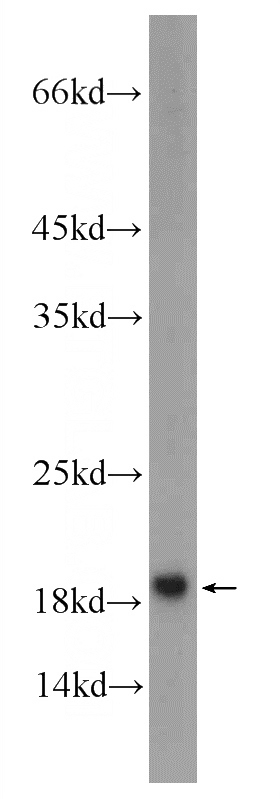
rat brain tissue were subjected to SDS PAGE followed by western blot with Catalog No:115449(SNAPIN Antibody) at dilution of 1:200
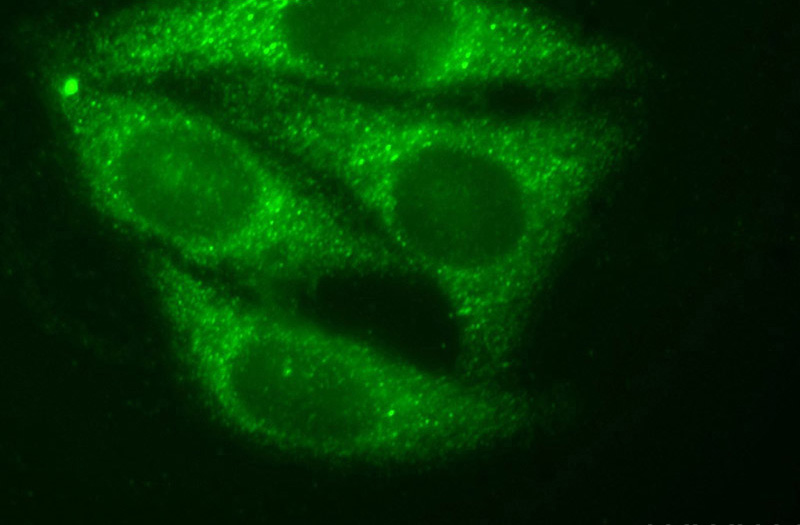
Immunofluorescent analysis of HepG2 cells, using SNAPIN antibody Catalog No:115449 at 1:50 dilution and FITC-labeled donkey anti-rabbit IgG (green).
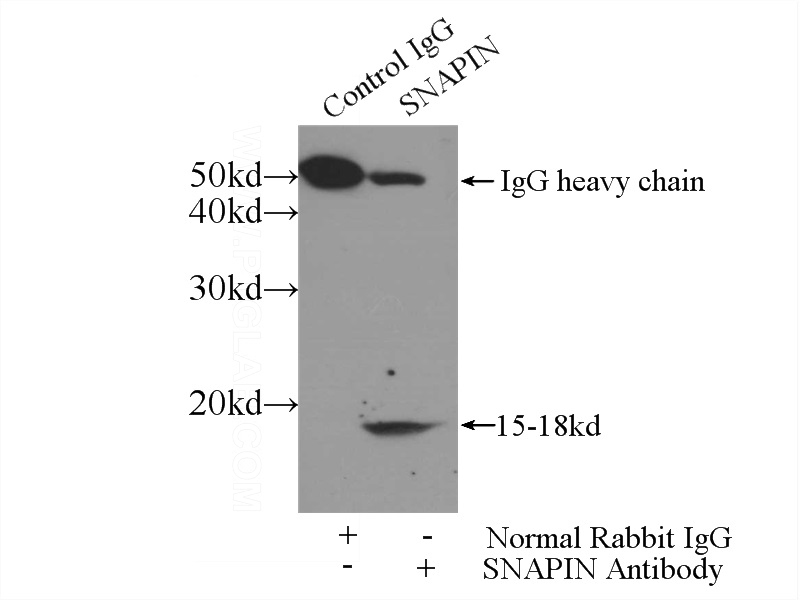
IP Result of anti-SNAPIN (IP:Catalog No:115449, 5ug; Detection:Catalog No:115449 1:300) with mouse brain tissue lysate 4000ug.
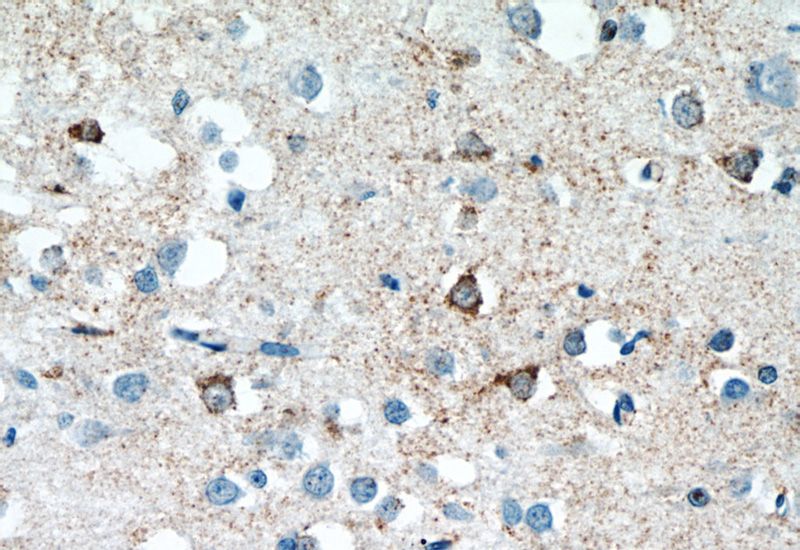
Immunohistochemistry of paraffin-embedded human brain tissue slide using Catalog No:115449(SNAPIN Antibody) at dilution of 1:50 (under 40x lens)
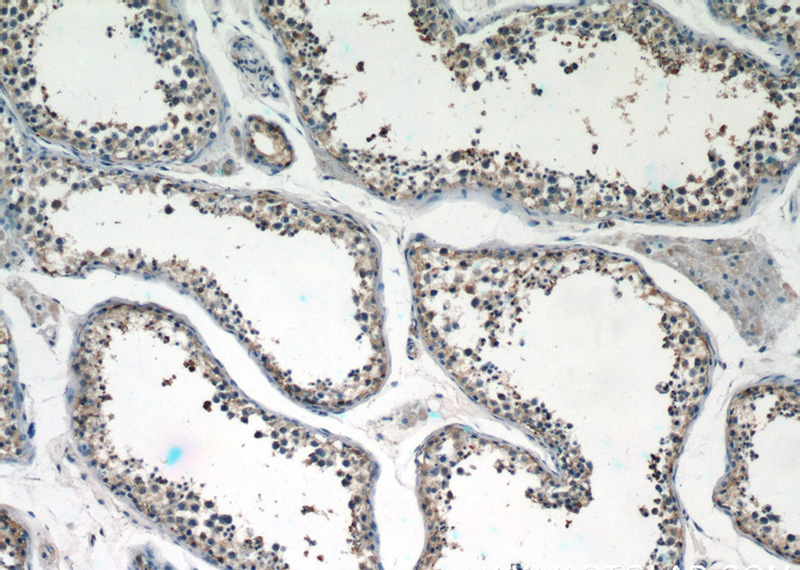
Immunohistochemistry of paraffin-embedded human testis tissue slide using Catalog No:115449(SNAPIN Antibody) at dilution of 1:50 (under 10x lens)
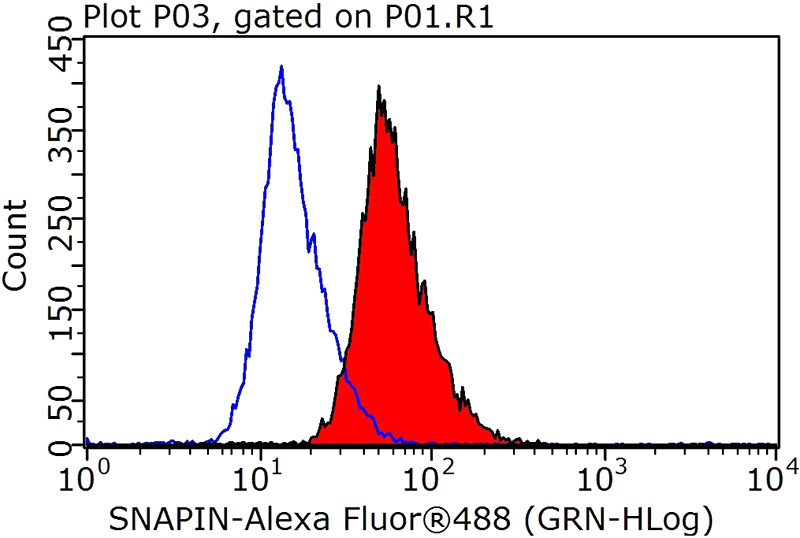
1X10^6 HepG2 cells were stained with 0.2ug SNAPIN antibody (Catalog No:115449, red) and control antibody (blue). Fixed with 90% MeOH blocked with 3% BSA (30 min). Alexa Fluor 488-congugated AffiniPure Goat Anti-Rabbit IgG(H+L) with dilution 1:1000.
-
Background
Snapin, a protein of relative molecular weight of 15kd, is implicated in neurotransmission by binding to SNAP-25. Snapin was enriched in neurons and exclusively located on synaptic vesicle membrane, which may be a PKA target for modulating transmitter release through the cAMP-dependent signal-transduction pathway. This anitbody can recognize the 15-18kd(Monomer) and 30-36kd(Dimer) forms of SNAPIN.
-
References
- Cullinane AR, Curry JA, Carmona-Rivera C. A BLOC-1 mutation screen reveals that PLDN is mutated in Hermansky-Pudlak Syndrome type 9. American journal of human genetics. 88(6):778-87. 2011.
- Cullinane AR, Curry JA, Golas G. A BLOC-1 mutation screen reveals a novel BLOC1S3 mutation in Hermansky-Pudlak Syndrome type 8. Pigment cell & melanoma research. 25(5):584-91. 2012.
- Blandin G, Marchand S, Charton K. A human skeletal muscle interactome centered on proteins involved in muscular dystrophies: LGMD interactome. Skeletal muscle. 3(1):3. 2013.
- Makani V, Sultana R, Sie KS. Annexin A1 complex mediates oxytocin vesicle transport. Journal of neuroendocrinology. 25(12):1241-54. 2013.
Related Products / Services
Please note: All products are "FOR RESEARCH USE ONLY AND ARE NOT INTENDED FOR DIAGNOSTIC OR THERAPEUTIC USE"
